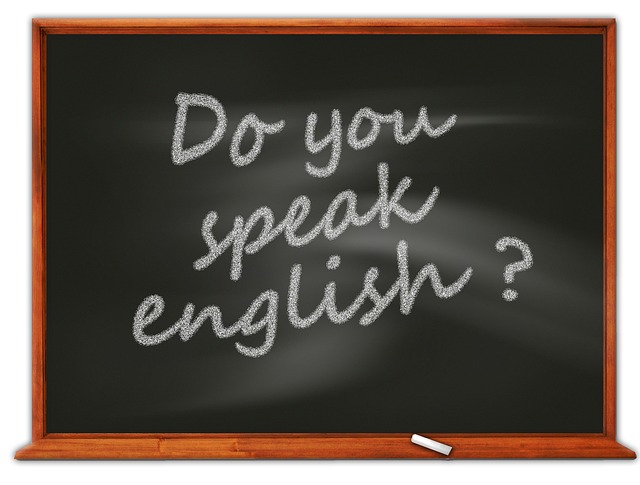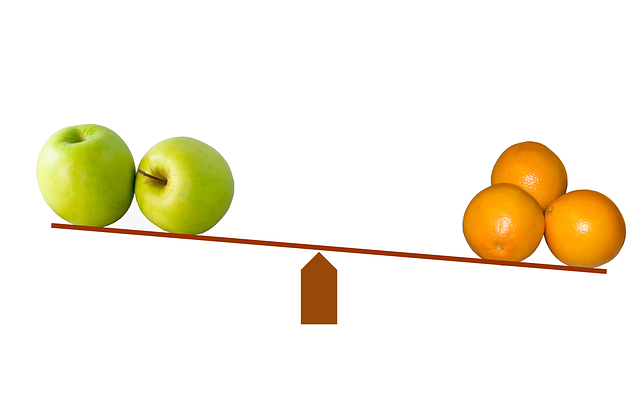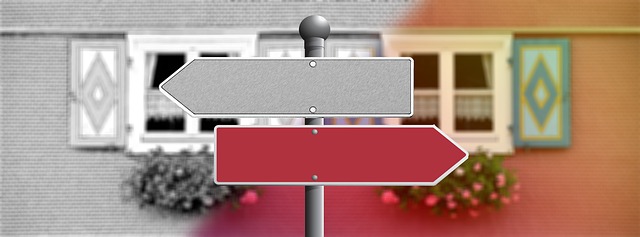
If your dream is to attend college or graduate school in an English-speaking country, you’ll likely need to submit scores from either the TOEFL or IELTS. But how do TOEFL and IELTS scores compare with each other? Are TOEFL to IELTS score conversions actually possible? And if so, what can these score conversions tell us about the TOEFL and IELTS?
In this article, we’ll discuss how the TOEFL and IELTS scoring systems differ and then provide you with the most accurate TOEFL IELTS conversion tables currently available. Finally, we’ll explain how you can use this information on IELTS vs TOEFL scores to help you decide which test you should take.
IELTS vs TOEFL Scores: How Do They Differ?
Generally speaking, the TOEFL iBT and IELTS Academic are fairly similar tests. Both exams measure your proficiency in English reading, writing, listening, and speaking. Additionally, both exams are a common admission requirement for undergraduate and graduate education in English-speaking countries.
Nevertheless, each test uses a distinct scoring scale. On the TOEFL, test takers each receive four scores (one each for Reading, Writing, Listening, and Speaking) on a scale of 0-30 in 1-point increments. These four scores combine for a total TOEFL score out of 120 points. For example, if I were to score 29 on Reading, 25 on Writing, 24 on Listening, and 25 on Speaking, my total TOEFL score would be 29+25+24+25=103.
On the IELTS, test takers each receive four separate “band” scores for Reading, Writing, Listening, and Speaking on a scale of 0-9 in half-point increments. The total IELTS band score is the average (as opposed to the sum) of these four scores, and so it uses the same scale of 0-9. For example, if I were to score 8 on Reading, 7 on Writing, 5 on Listening, and 6 on Speaking, my total IELTS band score would be (8+7+5+6)/4=6.5. Note that total IELTS scores always round to the nearest half-point.

TOEFL IELTS Conversion Charts
In this section, we give you five TOEFL to IELTS score conversion charts. One chart is for total scores, and the other charts are for each section of the exam.
By the way: we have built the world's best online TOEFL course. Get online practice (TPO-sytle!) and individual grading and feedback on Speaking and Writing.
To be fair, it's possible to get a good TOEFL score studying alone. But PrepScholar is the world's most effective TOEFL course if you are worried about the TOEFL and are struggling to improve your score.
Learn how you can improve your TOEFL score by 15 points today.
But how accurate are these charts? Unfortunately, there is no official TOEFL IELTS conversion system. This is because different groups administer the TOEFL and IELTS. Luckily, though, ETS (the creators of the TOEFL) offers TOEFL IELTS conversion estimates on its website. These estimates were found using data from more than 1,000 test takers who took both the TOEFL and IELTS. So although these charts aren’t 100 percent accurate, they’re the closest we can get to an official TOEFL IELTS conversion system!
In addition, it’s important for you to remember that the TOEFL and IELTS do not test identical content. In fact, there are many major differences between the two exams! For example, the TOEFL Reading section focuses on university-level texts, whereas the IELTS Reading section offers a wider variety of texts, such as newspaper and magazine articles. Furthermore, on the TOEFL Speaking section you must speak into a computer microphone, whereas on the IELTS you must converse in English with a human evaluator.
And now, without further delay, here are the TOEFL IELTS conversion charts!
TOEFL to IELTS: Total Scores
| TOEFL | IELTS |
| 118-120 | 9 |
| 115-117 | 8.5 |
| 110-114 | 8 |
| 102-109 | 7.5 |
| 94-101 | 7 |
| 79-93 | 6.5 |
| 60-78 | 6 |
| 46-59 | 5.5 |
| 35-45 | 5 |
| 32-34 | 4.5 |
| 0-31 | 0-4 |
TOEFL to IELTS: Reading
| TOEFL | IELTS |
| 30 | 9 |
| 29 | 8.5 |
| 29 | 8 |
| 27-28 | 7.5 |
| 24-26 | 7 |
| 19-23 | 6.5 |
| 13-18 | 6 |
| 8-12 | 5.5 |
| 4-7 | 5 |
| 3 | 4.5 |
| 0-2 | 0-4 |
TOEFL to IELTS: Writing
| TOEFL | IELTS |
| 30 | 9 |
| 30 | 8.5 |
| 30 | 8 |
| 29 | 7.5 |
| 27-28 | 7 |
| 24-26 | 6.5 |
| 21-23 | 6 |
| 18-20 | 5.5 |
| 14-17 | 5 |
| 12-13 | 4.5 |
| 0-11 | 0-4 |

TOEFL to IELTS: Listening
| TOEFL | IELTS |
| 30 | 9 |
| 29 | 8.5 |
| 28 | 8 |
| 27 | 7.5 |
| 24-26 | 7 |
| 20-23 | 6.5 |
| 12-19 | 6 |
| 7-11 | 5.5 |
| 4-6 | 5 |
| 3 | 4.5 |
| 0-2 | 0-4 |
TOEFL to IELTS: Speaking
| TOEFL | IELTS |
| 30 | 9 |
| 28-29 | 8.5 |
| 26-27 | 8 |
| 24-25 | 7.5 |
| 23 | 7 |
| 20-22 | 6.5 |
| 18-19 | 6 |
| 16-17 | 5.5 |
| 14-15 | 5 |
| 12-13 | 4.5 |
| 0-11 | 0-4 |

What Do the TOEFL IELTS Conversion Charts Mean for You?
As you can see in these charts, the TOEFL scoring scale uses a much larger span of points (0-120) than the IELTS (0-9) does. With the TOEFL, you’re getting a more precise indicator of your English proficiency. For example, there’s a big difference between 60 and 93 on the TOEFL: 60 isn’t usually high enough for admission into U.S. universities, whereas 93 is a solid score. In fact, 93 is higher than the average required TOEFL score of 78.
On the IELTS, however, 60 and 93 convert into 6 and 6.5, respectively. That’s only a half-point difference! So even if your English skills are actually somewhere between 6 and 6.5 (or, between 60 and 93 on the TOEFL), you can’t see these minute differences in language comprehension on the IELTS like you can on the TOEFL.
Also, the TOEFL does not round scores, whereas the IELTS does. On the IELTS, a score of 6.125 rounds down to 6 — which is, unfortunately, just below the average IELTS score required for admission into U.S. universities. However, with a score of 78 on the TOEFL — which corresponds to 6 on the IELTS — you’re guaranteed to meet the minimum admission requirements for many U.S. universities. So if you’re trying to get accepted into as many U.S. universities as possible, the TOEFL scoring system makes it slightly easier to get the score you need for admission.
For instance, UCLA’s graduate school requires either a minimum TOEFL score of 87 or a minimum IELTS band score of 7. But according to the conversion chart above, 87 on the TOEFL converts into 6.5 on the IELTS — which is a half-point lower than the required IELTS score for UCLA! Thus, it may be a little easier to meet the English requirements for UCLA if you opt for the TOEFL over the IELTS.
That being said, many U.S. universities specify TOEFL score requirements for each section (Reading, Writing, Listening, and Speaking), which can make it difficult to get accepted into U.S. schools. Why? Because even if you meet the total TOEFL score requirement, if one of your section scores is too low, your application may be rejected! Meanwhile, with the IELTS, most U.S. schools only require a minimum total band score, not individual section scores. As a result, you usually won’t have to worry about attaining certain IELTS section scores — just a total score.
Ultimately, although TOEFL to IELTS score conversions can help you get a feel for how TOEFL scores compare to IELTS scores, don’t rely on these charts to tell you which test you should take. Do your research, figure out which schools you’re interested in, and choose the test that’ll give you your best shot at getting accepted!
What’s Next?
Want to learn more about TOEFL scoring? Read our in-depth guides to learn what a good TOEFL score is and what the TOEFL score range means for you.
Still deciding between the TOEFL or IELTS? Our detailed analysis introduces the pros and cons of the two exams and offers helpful advice on how to select the best test for you.
Looking for TOEFL help? Then check out our guide to the five best TOEFL books and test yourself with high-quality TOEFL practice questions and tests.
Ready to improve your TOEFL score by 15 points?
Download our best TOEFL Strategy eBook (valued at $14.49) for FREE! Learn the top 5 strategies you must know to improve your TOEFL score. Download it for free now:
